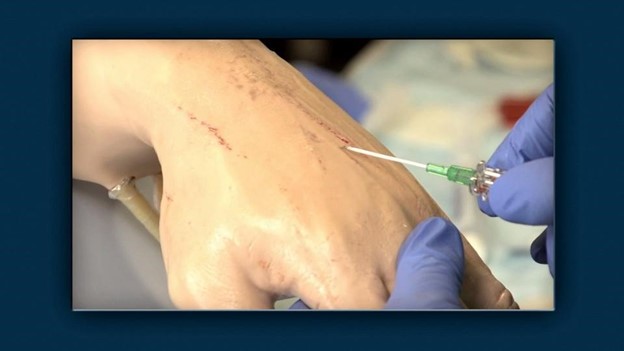A nurse is caring for a client who reports xerostomia following radiation therapy to the mandible.
Which of the following is an appropriate action by the nurse?
Suggest rinsing his mouth with an alcohol-based mouth wash.
Instruct the client on the use of esophageal speech.
Offer the client saltine crackers between meals.
Provide humidification of the room air.
The Correct Answer is D
Provide humidification of the room air. This is because humidification can help moisten the oral mucosa and reduce the discomfort of xerostomia. Xerostomia is a condition of dry mouth caused by reduced or absent saliva flow, which can occur after radiation therapy to the head and neck area.
Choice A is wrong because rinsing the mouth with an alcohol-based mouth wash can irritate the oral tissues and worsen xerostomia. Alcohol can also dehydrate the mouth and reduce saliva production.
Choice B is wrong because esophageal speech is a method of voice restoration after laryngectomy, not a treatment for xerostomia.
Esophageal speech involves swallowing air into the esophagus and releasing it to create sound.
It has nothing to do with saliva flow or dry mouth.
Choice C is wrong because saltine crackers are dry and hard to swallow without adequate saliva.
They can also scratch the oral mucosa and cause pain or bleeding. Offering the client saltine crackers between meals can aggravate xerostomia and increase the risk of choking.
Normal ranges for saliva flow vary depending on the method of measurement, but generally, a stimulated saliva flow rate of less than 0.7 mL/min or an unstimulated saliva flow rate of less than 0.1 mL/min is considered indicative of xerostomia.
Nursing Test Bank
Naxlex Comprehensive Predictor Exams
Related Questions
Correct Answer is C
Explanation
Choice A reason:
Administer epinephrine subcutaneously. This is not the necessary action to be taken. Epinephrine is used to treat severe allergic reactions (anaphylaxis). However, in this case, the client is experiencing a febrile non-haemolytic transfusion reaction, not an allergic reaction.
Choice B reason:
Place the blood bag in a biohazard bag before discarding. This is not the necessary action to be taken by the nurse. Proper disposal of biohazardous materials is essential, but in this situation, the nurse's priority is to address the client's condition and not the disposal of the blood bag
Choice C reason:
Documentation of the transfusion reaction is crucial for the client's medical history and for future reference. The nurse should record the client's signs and symptoms, the actions taken, and any other relevant information related to the reaction.
Choice D reason
Infuse 500 ml lactated Ringer's IV. This is not necessary action to be taken by the nurse because there is no indication for infusing lactated Ringer's solution in response to the transfusion reaction described. Treatment for febrile non-haemolytic transfusion reactions generally involves stopping the transfusion, administering antipyretics (like acetaminophen) if necessary, and providing supportive care as needed.
Correct Answer is D
Explanation

This is because after puncturing the skin and the vein, the nurse needs to advance the catheter into the vein with the finger hub to ensure proper placement and prevent complications such as infiltration or phlebitis.
Choice A is wrong because flushing the catheter with saline should be done after securing the catheter to the skin with a transparent dressing and attaching a primed piece of extension tubing to the catheter.
Choice B is wrong because retracting the stylet should be done after advancing the catheter into the vein and releasing the tourniquet from the client’s arm.
Choice C is wrong because releasing the tourniquet should be done after advancing the catheter into the vein and before retracting the stylet.
Whether you are a student looking to ace your exams or a practicing nurse seeking to enhance your expertise , our nursing education contents will empower you with the confidence and competence to make a difference in the lives of patients and become a respected leader in the healthcare field.
Visit Naxlex, invest in your future and unlock endless possibilities with our unparalleled nursing education contents today
Report Wrong Answer on the Current Question
Do you disagree with the answer? If yes, what is your expected answer? Explain.
Kindly be descriptive with the issue you are facing.
